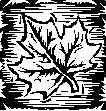 |
Concepts of Biology (BIOL116) - Dr. S.G. Saupe; Biology Department, College of St. Benedict/St. John's University, Collegeville, MN 56321; ssaupe@csbsju.edu; http://www.employees.csbsju.edu/ssaupe/ |
 |
Concepts of Biology (BIOL116) - Dr. S.G. Saupe; Biology Department, College of St. Benedict/St. John's University, Collegeville, MN 56321; ssaupe@csbsju.edu; http://www.employees.csbsju.edu/ssaupe/ |
Energy - Study Guide
Reading:
Purves et al. Chapter 55
Goal
and Objectives:
The major goal of this unit is to provide you with an understanding of
the source, nature and mechanism of the movement of energy and nutrients in an
ecosystem. Specifically, upon
completion of this unit you should be able to:
outline
the basic processes of photosynthesis and respiration
describe the basic model for energy flow and its biological consequences
Important Terms/Concepts: (be able to use conversationally)
|
|
|
Questions
for Thought and Study:
What
is the 10% Rule of Thumb? Why
is it called a rule and not a law?
Energy
is lost in the transfer between each trophic level.
Where does that energy go?
Write
the equation for photosynthesis. Write
the equation for respiration. What
is the function of each process? Where
do they occur in the cell? In
what type of organisms? Could
life exist without one or the other?
Compare
and contrast food chains and food webs.
Which is more stable and why? Give
an example of each.
Can you use these terms? producer, consumer, primary consumer, secondary consumer, tertiary consumer, herbivore carnivore, primary carnivore, secondary carnivore, detritivore, decomposer. Can you give examples of each?
State
the first and second laws of thermodynamics.
Relate their importance to energy flow.
In
what form does energy flow through food webs?
Explain
why energy flow is diagrammed as a pyramid.
Identify other aspects of ecosystems that can be described using the
pyramid model. Can any of these
pyramids be inverted?
If
the producers have 1000 units of energy, calculate the approx. amount of
energy in a tertiary consumer.
Explain
why most food chains are rarely more than 3-5 links.
Explain
why whales, hippos and apatosaurs are big.
Explain
why there are few carnivores larger than the "cats".
Some biologists consider it doubtful that T. rex was an active predator. Why?
What
is the principle of food size?
Which
is energetically more efficient: a weasel or mouse? Explain.
Human cultural evolution can be related to the energy pyramid. Explain.
What are some future predictions concerning our energy future? Do you agree or disagree with these?
Defend
or attack the statement: In the
future, humans will probably eat less meat.
What
is biological magnification?
Explain
why DDT decimated the populations of ospreys and other birds of prey even
though it was sprayed in the environment in relatively low, non-toxic doses.
Explain
why it is true that conditions that control the growth of producers
ultimately control all the individuals in the ecosystem as well.
Why should you not eat too many, say lake trout, from Lake Superior?
| | Top| SGS Home | CSB/SJU Home | Biology Dept | Biol116 Section Home Page | Concepts Home Page | Disclaimer | |
Last updated: April 22, 2004 � Copyright by SG Saupe